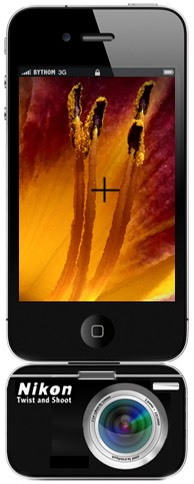(news and commentary)
Everyone is looking for that "magic" element that will catapult their product out of the abysmal black hole sucking up compact camera sales. Panasonic's take: add a crummy EVF.
The new Lumix LF1 is your basic upper range compact camera: it adds a longer 28-200mm equivalent focal length lens to the well-established LX7 sensor. But the "magic" potion hoping to spike sales is a 0.2" 202k dot EVF.
To put that in context, most of the EVFs we've seen in the mirrorless cameras to date have been 0.5" 1.4m dot or higher specifications. The 202k dot in the LF1 is so low in pixel count I'm not even sure what to call it: it's substantially lower in quality than a VGA display. It appears to even be lower than QVGA (320x240). Needless to say, looking through the EVF on this model provides a very crude experience.
Magic bullet? No. Not even a rubber bullet. Maybe we should call it a blank round, as it made a sound but probably didn't have any impact on the market.
The problem at this point should be obvious: the camera makers are shuffling around in their bin of known parts and grafting them onto known commodities. Thus, we get GPS, EVF, WiFi, NFC, basically any acronym that seems even remotely buzz worthy, but then they get pasted onto me-to compact cameras that need a giant rethink to start with.
No matter how you circle the wagons, compacts are still under attack by smartphones, and no one has yet to find the answer that will stop the onslaught.
Indeed, think about the WiFi component in the Lumix LF1. Panasonic is making big noises about the "tap to transfer images" function in their recent WiFi/NFC enabled cameras (e.g. GF6, G6, LF1). What are we supposed to tap? Our smartphones, of course. All this does is re-affirm that the smartphone is the center of the photography universe now. All the image review, processing, and moving to social sites or the cloud is being handled by the smartphone, not the camera. So this should redefine what a camera is.
I've been trying to point this out for some time, but a compact camera of the future is not a complete system as the camera makers keep trying to make it. It really is only an input device for a mobile device (smartphone, tablet, laptop). Instead of adding stuff to the compact camera, someone should be trying to figure out all the stuff they can remove.
Once again I'll point out the more obvious approach:

Just enough camera to go solo if need be, but best when connected directly to the mobile device.
Canon has come the closest to this approach of anyone. The Powershot N has most of the basics of a "smartphone companion camera" right except for one: the NIH syndrome has Canon trying to get into the middle, both with their Canon CameraWindow app and their Canon Image Gateway. We don't need more middles, and there's no money in those for the camera makers, anyway, so I don't see why every camera company thinks they have to play that way.


